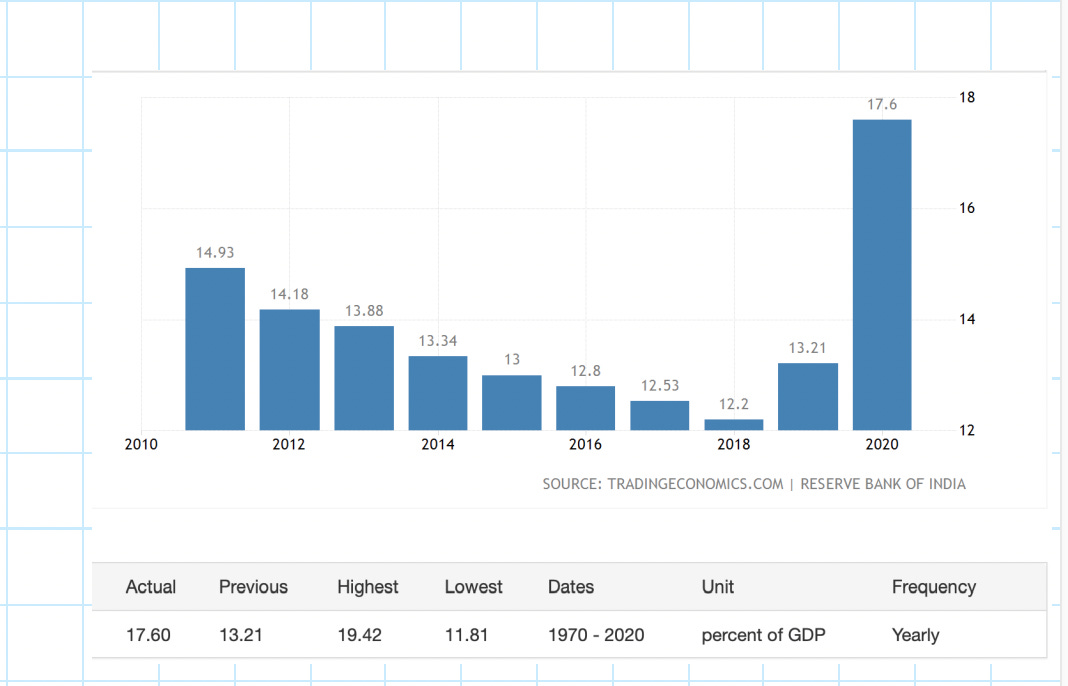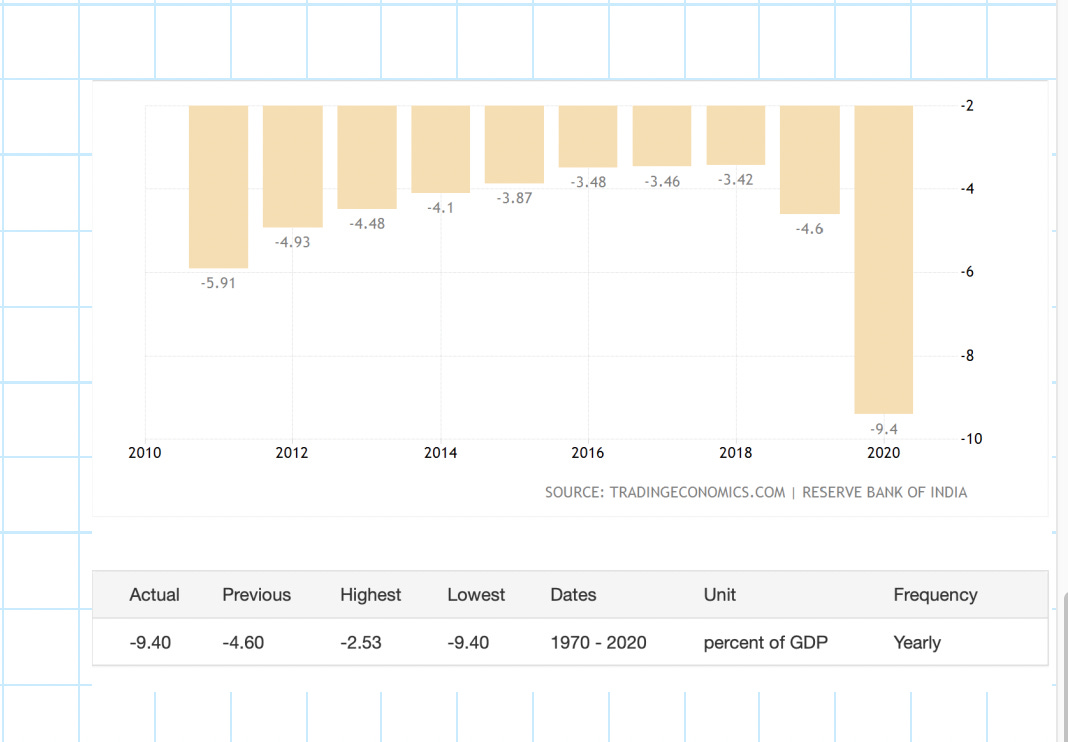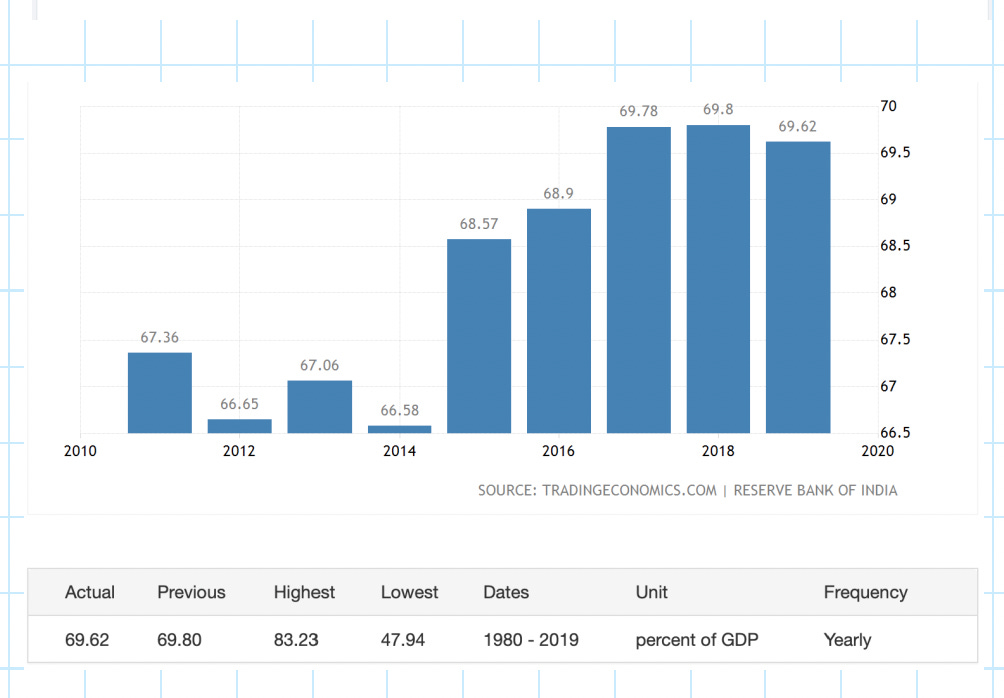Asset monetization is driven by need for cash by Govt.
Will assets monetization boost efficiency in the economy?
How will asset monetization help the Government?
Govt. has announced its intention to “monetize” about 6 trillion INR worth of assets held by it, and PSUs, that it will “monetize” by letting private sector bid for operating such assets for 25 years, for a lump sum payment upfront, but without giving away title to the underlying assets.
In effect, Govt is telling private operators that here is this road, godown, pipeline, or railway platform, that you can operate for 25 years. Please calculate what you can earn from it in various ways, over the next 25 years; discount that cash flow to its Present Value, deduct from that your profit margin, and pay me the balance amount as upfront rental.
Lets us assume the value of the said asset is 100 INR. And return to the asset in real terms is 4% pa. [net of inflation.] The present value of the 4% earnings, discounted at the real rate of interest to such an operator, assuming it is 6%, [again real as opposed to nominal rate] would be INR 51.3. Let us round it off to 50%.
INR 50 represents the Present Value of annuity of INR 4, over 25 years, discounted at 6% pa. In effect for every 100 INR of assets monetized, the cash flow yield from the asset that the operator can expect is INR 50. From this he must deduct the return that he expects from his investment, the risk premium attached to the earning, and general uncertainty of dealing with a capricious Govt. Assume the operator wants a minimum of 50% return on his equity. He will then be willing to pay 35 INR [rounding off the calculation] for the 100 INR assets.
One doesn’t know if the 6 trillion number is indeed the market value of the assets. But assuming it is, then the total value of upfront rental it can expect from such monetization will be in the region of INR 2.1 trillion or less. In fact given normal discounting rates 50% iN such cases [100% return on capital], Govt. should expect no more than 1.5 Trillion INR.
Why is Govt. doing this?:
Very simply put, the Govt. is broke.
Govt. has been nursing a “silent” fiscal crisis [as Rathin Roy puts it] ever since Modi tanked the economy with serial disasters like demonetization, and GST; and followed it up with a disastrous tax cut for corporates of 1.45 trillion INR in 2019, without giving any thought to how the shortfall would be made up. As result of continuously falling GDP growth, disruption in revenue caused by serial disasters, and the corporate tax cuts, Modi has had to steeply hike prices of inelastic commodities like petroleum products to pay for the corporate tax cuts.
The burden of the hike in direct taxes falls on the lower and middle class consumers indirectly, and hence, their consumption falls, dragging GDP growth down even further. This snarl of vicious circularity was further exacerbated by the pandemic, when Modi with his usual panache for disasters, tanked the economy by sinking GDP by 28% in one quarter. The GDP for the full year fell by 7%, the highest of any major economy.
So all these Modi engineered disasters combined, has sent Govt. revenues plummeting, and Govt deficits soaring, thus necessitating record borrowings to pay for Govt. expenses.
With Govt fiscal deficit approaching 9.4% of GDP in 2020, and General Govt debt at 90% of GDP in the current year, Modi has no choice to scrape the bottom of the barrel looking for crumbs of revenue to fill Govt. coffers. Hence the hare-brained asset monetization.
Here be three charts in support of my comments:
Govt. revenue as percentage
of GDP:
Fiscal deficit as percentage of GDP:
Combined Govt. debt as percentage of GDP:
Data of the current year is not in the charts. But Govt. debt as percentage of GDP, now stand in the region of 90%, Govt. tax and non-tax revenues are expected to be 22.7% of GDP, and the combined Govt. deficit is projected at 6.3%.
If and when monetization of assets happen, they will add to the non-tax revenues of the Govt. which are currently 5.1% of GDP, up from 2.7% in 2014-15. They have virtually doubled after 2014, and are testimony to Modi sarkar’s genius for stealing money from. PSUs, with the RBI reserves not being exempt from such larceny.
All this skulduggery comes in the backdrop of India’s worsening credit ratings, that are just about a notch above junk, with a negative outlook. For those of you with an interest in deteriorating Govt. finances, I present you with the following table:
Note the non-tax revenue line in yellow. It tells the whole story.
Conceptually, is this a good way to privatize?:
Why do we all urge privatization of Govt. assets? Why is it such a good thing, assuming that Govt. takes care not to create private monopolies while doing so?
Take the case of selling off BPCL to the highest bidder. What really happens when you do so?
Firstly, the buyer offers more than the current value of the assets, because she can see hidden value in the assets, can improve on efficiency of use of assets by de-bottle-necking etc, and integrate it better into her existing businesses. In short, if the current value of BPCL is 100, the prospective buyer will likely pay 120 or more for it because of the synergies she can exploit. So the assets gets sold at a premium, and the premium then becomes available as savings in the economy for further investment.
Secondly, it is important to see what Govt. does with the money it receives. Is it used to pay for increased Govt. consumption, or more Govt investment in say infra, or simply to pay down excessive Govt debt? Ideally, given India’s fiscal position, where increasing Govt deficits, and increasing borrowings to finance them, are crowding out private investment, Govt should use the privatization money to pare down debt, lower real interest rates, and thus spur, private investment, that lowers ICOR through increased efficiency of assets use, that helps spur faster GDP growth.
So to recap, privatization should lead to [a] additionally of gross savings in the economy fetched by the synergy premium paid by the buyer of privatized assets, [b] paring down of Govt. instead of further increase in Govt expenditure, whether by way of consumption or investment, and [c] lower real interest rates to spur private investment that improves efficiency of asset use.
Having got that, lets us see
what assets monetization does:
Does asset monetization bring additionally of resources to the gross savings pool in the economy? The answer is no at two levels.
First, there is no transfer of title to the asset to the operator in asset monetization. So the operator will severely limit any additional investment in the asset. Hence the scope for any increase in efficiency of use is very limited. Therefore, the operator is unlikely to pay any premium over the intrinsic current earnings value of the asset.
This should be very obvious if you consider how the operator will value toll collections on roads for example. Remember, private investment in share-cropped land is zero because the tenant has no incentive to invest in the assets, and the land lord has already lost interest in the asset. The incentives are very similarly flawed for rental operators.
Second, consider how will the buyer finance his purchase? In the case of BPCL, we allow foreign buyers. If there is one - whether directly or through an Indian partner - foreign savings come in to finance the transaction in the form of equity - adding to the pool of savings in the economy.
In the case of asset monetization, the buyers will be mostly local operators, who will look to banks, and say mutual funds like RIETs, as Shekhar Gupta says in his cut the clutter, [without realizing that mutual funds are not supposed to be lending] for financing the transaction.
Since their credit is a lot worse than that of Govt., an additional 600 bps gets added to the financing by way of risk premium, and so whatever gains you make in efficiency of asset use by operators, are offset by the credit risk premium. Who benefits? No one really. You simply add to transaction costs in the economy without any tangible gain.
So net net, asset monetization does not result in any additionally to gross savings in the economy, either by bringing in foreign savings, or by attracting a significant synergy premium.
Now consider what happens to the money so raised from asset monetization at two levels.
First who does this money belong to? Most of the assets being monetized belong to PSUs who, - a very crucial point this - already have private shareholders, albeit a minority. The money received from assets monetization thus belongs mostly to PSUs, and in the first instance, will go to their treasury, and not Govt. What will the PSUs do with the money? If they do nothing, then nothing happens further!
However, as we know from Modi’s track record, every bit of this additional money that PSUs get, will be vacuumed out of them by way of compulsory dividends or share buy-backs, and poured into the bottomless pit of Govt. coffers.
So whatever money that comes from asset monetization, goes back to Govt. via a circuitous route. Any dividend and or share buyback will be applicable to minority shareholders as well. These can be as high as 30 to 50%. So the yield to Govt from asset monetization gets reduced even further.
We saw earlier that Govt can expect only 25% to 35% of value of assets monetized as upfront rental. In case of PSUs the yield is further diluted by minority shareholders. Where such shareholders are 50% and the operator wants a 100% return, Govt will get only 12.5% of the value of asset monetized.
Secondly, what will Govt do with the money? Will it repay Govt. debt? Perish the thought.
Modi is a command and control authoritarian, who has promised 100 trillion INR of Govt. financed infrastructure. So the money will go into more Central Vistas, Bullet trains, 6 lane highways, setting new records in height of statutes dedicated to Lord Ram.
Basically the problem with Govt. infrastructure spending is that [a] it commandeers scarce resources into a centrally controlled vision of what the country needs, instead of being determined in a bottom-up, need driven manner, that prioritizes village and small town connectivity, local sanitation, roads, tap water, public transport, and schooling. Central planning has been the curse of India’s development story so far. [b] Spending on idle jumbo jets for the peripatetic Caesars, central vistas, bullet trains and the like, simply means the incremental return on investment tanks further, - the long shadow of an already poor ICOR stretches further - and that reduces future growth.
Finally don’t miss the point that assets monetization doesn’t increase the share of resources available to the private sector to grow incrementally by even a penny. They remain in the same box as before, and real interest rates will trend higher, rather than lower.
All-in-all, the idea of recycling Govt. funds by selling off existing assets to fund new ones is excellent. That’s the way to go. But in the current schema, no such thing happens, and speaking of the economy as a whole, nothing changes; except that transaction costs go up, and a severely limited Govt. bandwidth is further stretched thin over needless paper work.
Not the least, the scheme is tailor-made for rent seeking at all levels of the babudom and politicians. I hope the Modi sarkar realizes why “privatization” has been so engineered. Nobody will have the bandwidth to monitor how the scheme works at the operating level. Leakages will abound at all levels.





Modi is trying to fill the bottomless pit that he dug with his hubris filled decision: DEMONETISATION. Ever since that day India has been sinking deeper and deeper into economic disaster. It may take another decade to recover from such disaster. That too, it can be done only if Modi is removed from power.
Through his asset monetisation thrust Modi is trying to achieve another important objective: deprive the opposition parties from profiting through the use of public sector assets: employment, contracts etc. Modi thinks far too much ahead, only to destroy the opposition, impoverish the nation and enrich his cronies.
But he has still managed to make this all look right because he has been able to control the narrative, thanks to the Godi media and a bankrupt opposition that cannot unite under a single message.
Exceptionally written & very well conceived
Facts are really scary for any sensible citizen.
Please continue the good work